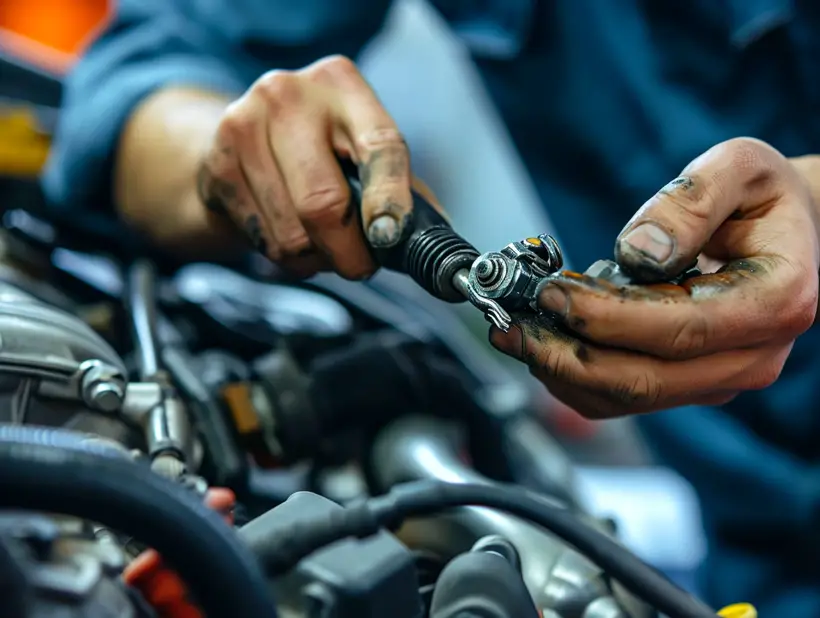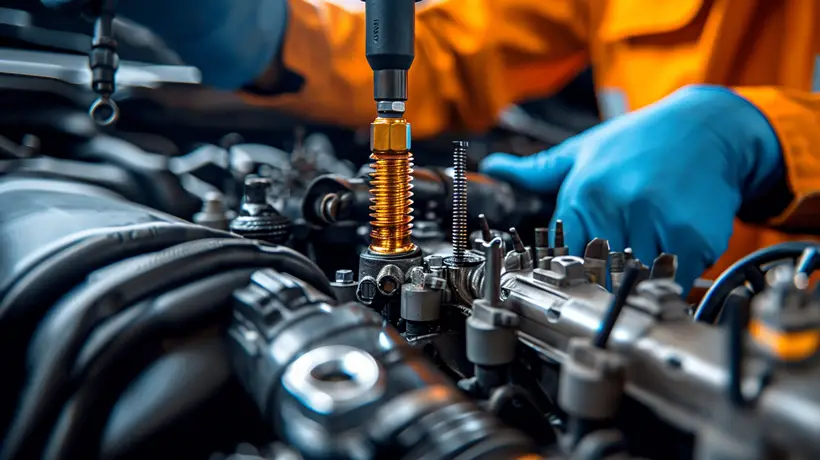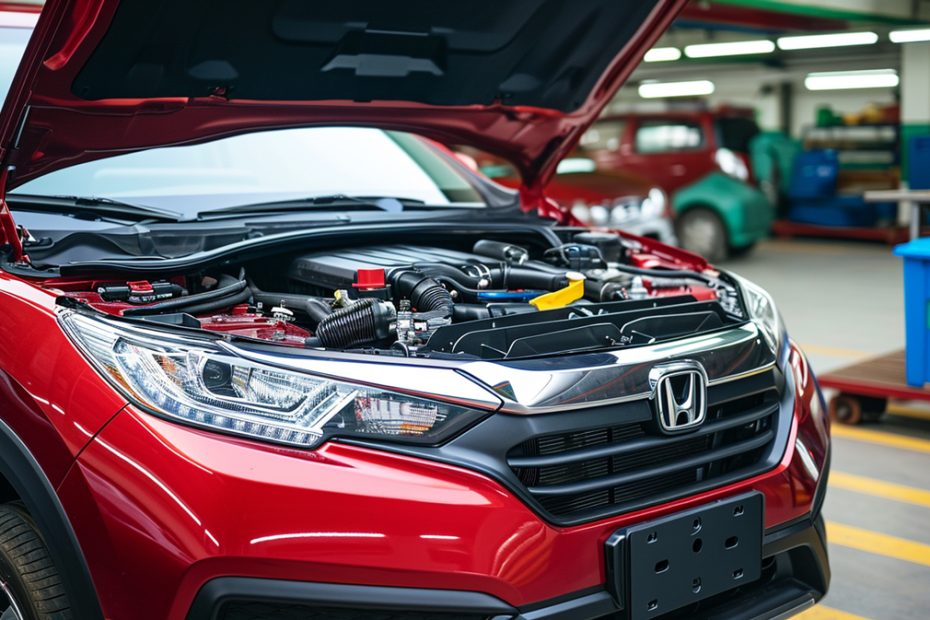We’ve all been there: you’re cruising down the road, you press on the gas, and suddenly there’s a whining noise that wasn’t there before. It’s not just a nuisance, it’s a sign that your car is telling you something’s off.
When it comes to diagnosing car troubles, we’re often faced with mysterious sounds that can be both confusing and concerning. A whining noise when accelerating is a classic symptom, and it’s frequently linked to power steering issues.
We’re here to help you pinpoint the problem. By understanding the common culprits behind that pesky whine, you’ll be better equipped to address it and get back to a smoother, quieter ride.
Common Causes of Whining Noise When Pressing the Gas
When we press the gas pedal and are met with an unsettling whine, it’s clear something’s amiss. A vehicle’s power steering system is often the culprit behind these noises, which signify that parts are wearing out or fluid levels are suboptimal.
Here are some principal factors that might be causing the whine:
- Low Power Steering Fluid: The most common issue is a drop in power steering fluid levels. Without enough fluid, the system can’t maintain proper pressure, leading to a whining sound.
- Worn-out Power Steering Belt: If the belt that powers the steering pump is frayed or slack, it can slip and cause a squeal, especially when the wheel is turned.
- Power Steering Pump Failure: The pump circulates fluid through the system, so if it’s failing, you’re likely to hear a whine as a result of the struggle to function.
- Leaking Hoses: Hoses conveying power steering fluid can develop leaks over time. This not only drops fluid levels but can also introduce air into the system, which exacerbates the whining noise.

It’s also worth considering these less common, but still possible causes:
- Steering Rack Wear and Tear: As the gears and mechanisms within the steering rack wear down, they can produce a whine.
- Improper Fluid Type: Using the incorrect type of power steering fluid can lead to inadequate lubrication and increased friction, resulting in whining.
To help identify these problems, let’s look at the steering system specifics:
| Component | Potential Issue |
|---|---|
| Power Steering Fluid Level | Low |
| Power Steering Belt | Loose or Worn |
| Power Steering Pump | Malfunctioning or Failing |
| Hoses | Leaking or Introducing Air into System |
| Steering Rack | Worn Out |
| Fluid Type | Incorrect for Vehicle |
By maintaining the steering system and addressing these issues promptly, we can prevent the uncomfortable surprise of a whining noise during acceleration and ensure our vehicle’s longevity and performance.
Power Steering Fluid Level Check

When we’re faced with a mysterious whine emanating from our vehicle as we press the gas pedal, it’s essential to start with the basics. Checking the power steering fluid level should be the initial step in troubleshooting power steering issues. Here’s a quick guide to ensure the fluid is at the proper level:
- Park your car on a level surface and turn off the engine.
- Locate the power steering fluid reservoir; it’s usually on or near the engine and has a cap with a steering wheel icon or the words “Power Steering.”
- Clean the outside of the reservoir to prevent dirt from entering the system.
- Remove the cap and check the dipstick attached ‚Äì it often has “Full” and “Low” indicators.
- If the fluid is below the “Low” mark, you’ll need to add the correct type of power steering fluid.
We must keep in mind that an inadequate fluid level can contribute significantly to steering system noise. Ensuring your fluid level is correct can prevent damage and costly repairs. We recommend checking your power steering fluid monthly or as stipulated in your car’s owner’s manual.
In cases where the fluid level drops frequently, it could suggest a leak in the power steering system. It’s wise to inspect the system for any signs of leakage, paying close attention to the hoses, clamps, and connections. Leaks should be addressed immediately by a professional to maintain the integrity of the steering system.
If after topping up the fluid the whining noise persists, the problem may be more complex, involving other components such as the power steering pump or belt. Regular maintenance and attentive care are pivotal to avoiding these problems, and keeping our vehicle operating smoothly.
Power Steering Pump Issues
When we face a whining noise upon pressing the gas, it’s essential to investigate potential problems with our power steering pump. This component is pivotal for the smooth operation of the steering system, and its malfunction can cause noticeable symptoms.
The power steering pump is responsible for pressurizing the steering fluid and providing the necessary force to turn the vehicle’s wheels effortlessly. Issues with the pump typically develop over time and can stem from wear and tear or insufficient fluid levels, leading to noisy operations and steering difficulties. Here’s what to look out for:
- Whining or Groaning Noises: A clear sign of pump failure is a persistent whine or groan when we turn the steering wheel, especially if the noise gets louder with acceleration.
- Steering Wheel Stiffness: Difficulty turning the wheel or a marked increase in effort required can indicate the pump isn’t providing adequate pressure.
- Steering Fluid Leaks: Any signs of fluid leakage around the pump or in the system could lead to a drop in pressure and subsequent noise.
Detecting a faulty pump involves a few steps:
- Inspect the power steering fluid reservoir for proper levels and condition. Dark, dirty fluid may suggest internal pump issues.
- Listen closely to the pump with the engine running. A failing pump could emit a whining noise even at idle.
- Perform a steering fluid flush as contaminated fluid can damage the pump internals over time.
It’s paramount to address these issues promptly as they can rapidly escalate, affecting not just our comfort but safety on the road. Regular maintenance, including fluid checks and timely replacements, will greatly extend the life of our power steering pump and system. Let’s stay attentive to our car’s needs to ensure driving remains a smooth and uninterrupted experience.
Power Steering Belt Inspection
Routine inspection of the power steering belt is vital to maintaining optimal performance of the steering system. When troubleshooting a whining noise, it’s crucial to examine the belt for any signs of wear and tear.
Here’s what we’ll look for during an inspection:
- Correct Tension: Too much slack in the belt can lead to slippage, while excessive tightness may cause undue strain on the bearings and pulleys.
- Surface Cracks and Fraying: Over time, a belt’s material may deteriorate. We check for noticeable cracks or frayed edges that may suggest it’s time for a replacement.
- Glazing and Hardening: A belt that looks shiny or feels rigid has likely suffered from heat exposure and glazing. This condition often leads to slipping and reduced power transmission.
To ensure accurate diagnostics, we may also start the engine to observe the belt as it moves. Unusual vibrations or misalignment often contribute to steering noise and warrant further action.
Regular maintenance includes a detailed belt inspection, typically suggested by the vehicle’s manufacturer. Adhering to these recommendations helps avoid unexpected failures and keeps us safe on the road.

Steps We Take During Power Steering Belt Inspection:
- Visually examine the belt’s condition, noting down any defects
- Test the belt’s tension and adjust if necessary using the appropriate tools
- Check pulleys and tensioners for stability and proper alignment
- Recommending belt replacement if damages or excessive wear is detected
With the belt in optimal condition, we expect a marked improvement in the function and sound of the power steering system. Maintaining this key component is part of our holistic approach to vehicle care that ensures smoother rides and prolongs the life of the entire steering mechanism.
Other Possible Power Steering Problems
Beyond the power steering belt, there are several components that could lead to a whining noise when accelerating. Power steering systems are intricate, and pinpointing the exact problem requires a careful look at each part of the system.
Power Steering Pump Wear or Failure
One common issue is wear or damage to the power steering pump itself. This critical piece facilitates the smooth operation of the steering system. Symptoms of a failing pump include:
- Difficulty steering, a clear sign the pump may not be pressurizing the fluid properly
- A noticeable whine which varies with engine speed, indicating the pump could be struggling
If the pump is the culprit, it’s usually best to have it inspected by a professional to determine if repair or replacement is needed.
Fluid Contamination
Another potential problem might be the contamination of power steering fluid. Debris and impurities can cause significant wear and tear on the system. Regularly checking the fluid’s condition can preempt these issues. Fluid that appears dark or has a burnt smell should be flushed and replaced.
Steering Rack Issues
The steering rack, which translates the steering wheel’s movements into the wheels’ direction, can also be problematic. Common signs of steering rack wear include:
- A tight steering wheel
- Inconsistent steering response
- Unusual noises during steering
Hoses and Connections
Do not overlook the hoses and connections that make up the power steering system. Issues here can lead to:
- Fluid leaks
- Reduced pressure in the power steering system
- Introduction of air into the system which can cause noise and erratic steering behavior
Routine checks on these components help maintain the power steering system’s integrity and ensure a smoother, quieter drive. It’s advisable to consult with a mechanic if you’re unfamiliar with the power steering system‚Äôs complexities, as unintended damage could lead to more significant problems down the road.
Steps for Inspecting Power Steering Components:
- Check power steering fluid quality and level
- Inspect the power steering pump for wear and damage
- Examine hoses and connections for leaks or loose fittings
- Assess the steering rack for signs of wear or damage
Regular maintenance and attention to these factors significantly reduce the likelihood of encountering a whining noise or other issues with your car’s power steering system.
Conclusion
We’ve gone through the essential steps to diagnose and address the pesky whining noise that can come from power steering issues. Remember, starting with the simplest solutions like checking your fluid levels can save you time and money. Regular inspections and maintenance are key to preventing these noises and ensuring your power steering system operates smoothly. If you’re experiencing any of the symptoms we’ve discussed, it’s best to tackle them early to avoid more significant problems down the road. Trust us, your car and your peace of mind will thank you for it. Drive safe and stay vigilant for any signs of power steering trouble.
